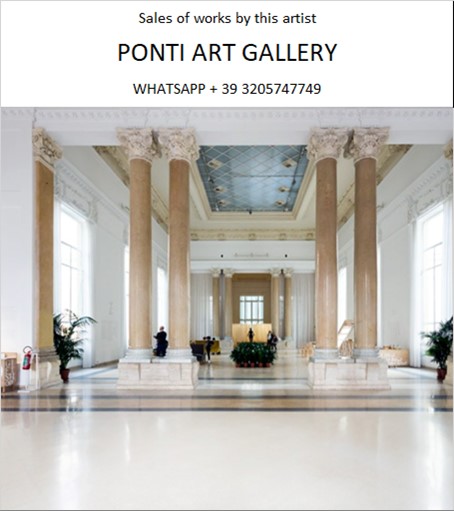Ponti Art Gallery is interested in buying and selling works
of art by this artist.

Edward Borein Biography
Edward Borein, born John Edward Borein on October 21, 1872, in San Leandro, California, was an artist whose work became synonymous with the American West. His depictions of cowboys, Native Americans, and the landscapes of the Old West were not only artistically acclaimed but also valued for their historical accuracy and authenticity.
Borein's connection to the West began in his childhood, growing up in a region where the cowboy lifestyle was a living reality. His father worked for the sheriff of Alameda County, and his maternal grandfather was renowned as one of the finest horsemen in Alta California. This environment undoubtedly influenced young Borein, who began drawing horses at the tender age of five. By the age of twelve, he was adept at riding, roping, and driving cattle, skills that would later inform his art with an insider's perspective.
At eighteen, Borein took to the life of a cowboy, buying a horse and a bedroll and setting off down the California coast. This experience deepened his understanding of the cowboy way of life, which he meticulously recorded in his sketches. However, after a year, he returned home, and his mother, recognizing the quality of his work, enrolled him in the Art School of the San Francisco Art Association. His formal education there was brief, lasting only a month, but it was during this time that he met fellow artists Jimmy Swinnerton and Maynard Dixon, who encouraged him to continue his art independently.
Borein's artistic journey took him to various locales, including the 45,000-acre Rancho Jesus Maria, where the grueling work contrasted sharply with his previous experiences. It was here that he sold his first two drawings to Charles Lummis, the publisher of the Land of Sunshine, for $15, marking the beginning of his professional career. Borein's travels also took him to Mexico, where he worked as a vaquero on large ranches, learned Spanish, and sketched the local lifestyle and landscapes. His encounters with Navajo, Hopi, Zuni, and Pima Indian Tribes further enriched his artistic repertoire.
In his early thirties, Borein decided to pursue a career as a professional artist and moved to New York City. His studio there became a hub for notable figures such as Will Rogers, Charles M. Russell, Carl Oscar Borg, and Buffalo Bill Cody. Despite his success in New York, Borein longed for the West and returned to California in 1919. He married Lucile Maxwell and settled in Santa Barbara in 1921, where he established a permanent studio at 17 De La Guerra St at the El Paseo.
Borein's work, which included etchings, watercolors, and drawings, quickly earned him a reputation as one of the foremost interpreters of the American West. He was particularly known for his etchings, creating over 400 images that captured the essence of cowboy and vaquero life, Native American communities, California missions, the Southwest, and stagecoaches. His mastery of watercolor and etching techniques was widely recognized, and his work was featured in one-man shows and collected by enthusiasts who valued his firsthand experience of the Old West.
Borein was deeply involved in the Santa Barbara community, contributing to the establishment of Old Spanish Days and the local riding group Rancheros Visitadores. His home, "La Barranca," became a local landmark, and although it was later demolished, the street bearing its name remains as a testament to his legacy.
Edward Borein passed away on May 19, 1945, in Santa Barbara, leaving behind a body of work that continues to be celebrated for its historical significance and artistic merit. His paintings and etchings are displayed in the Santa Barbara Historical Museum's Edward Borein Gallery, and in 1971, he was posthumously inducted into the Hall of Great Westerners of the National Cowboy & Western Heritage Museum. Borein's dedication to portraying the West with accuracy and respect earned him a place alongside his boyhood idol Frederic Remington and his friend and mentor Charles Marion Russell as one of the last artists to capture the Old West from personal observation. His legacy endures, not only through his art but also through the Edward Borein Gallery of Western Heritage, which honors his role as a documentarian of a bygone era.
Edward Borein Quotes and Sales
of Works
Ponti Art Gallery selects and deals with paintings by the
artist. Upon request, we provide free estimates and
evaluations, communicate prices, quotations, and current
market values.
If you are interested in BUYING or SELLING works by the
artist, contact us immediately.
If you wish to sell or receive an evaluation of the
works:
Send us a frontal photo of the painting, one of the back,
and one of the signature. Also, indicate the dimensions of
the work. Inform us about the purchase origin of the work
and any kind of available documentation (purchase
receipts, certificates of authenticity, publications). One
of our operators will respond to you on the same day. We
guarantee maximum confidentiality and extreme
professionalism.
If you wish to purchase works by the painter: Contact us
and let us know your request. We will inform you about the
available works. We also offer the possibility to
subscribe to our NEWSLETTER, through which you will be
informed at the beginning of each month about the latest
acquisitions of the art gallery.
You can send us pictures of the work:
